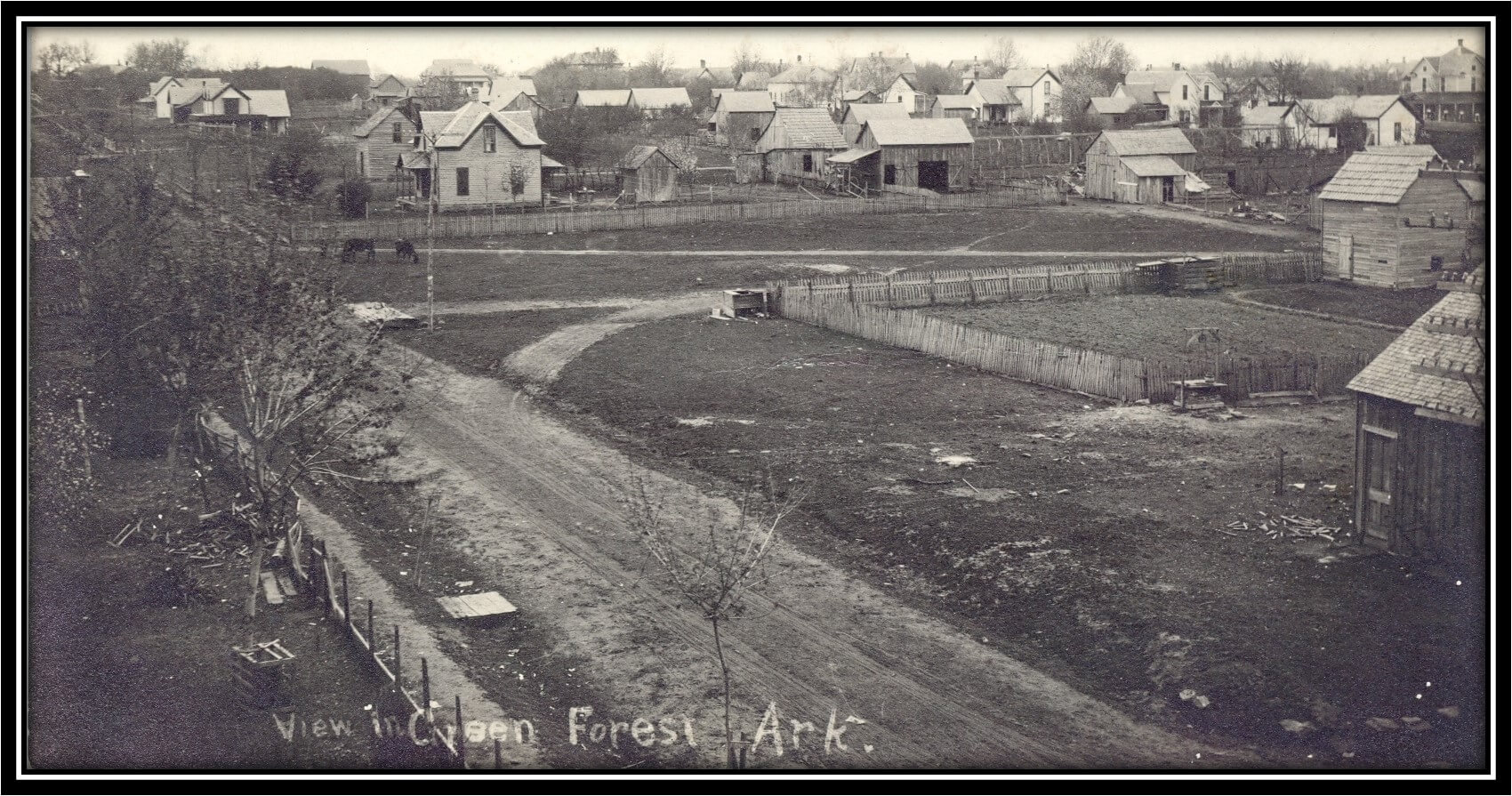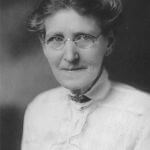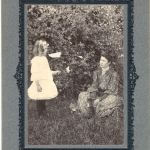History
The first settler in Green Forest was John Scott, a maker of cow and goat bells. He inspired the towns original name “Scotts Prairie.”
Later John Grim homestead an area around and while clearing the land left a grove of trees. That area became known as what we now call Green Forest.

Here is some interesting Green Forest trivia. Did you know Green Forest was once Scott's Prairie and came close to being named Grim's Forest?
The first known settler in the area was John Scott, “a maker of sheep and cowbells,” who was also briefly the postmaster and named the town Scott's Prairie after himself. First Baptist Church was built from logs in 1854 and was the local school. The Methodist Church opened in 1857.
In June 1861, up to 5,000 Confederate soldiers led by Brig. Gen. James H. McBride set up camp in and around town, prompting Yankees in November 1863 under Maj. Austin A. King to burn the town to the ground. However, the Skirmish of Yocum Creek resulted in the only known casualties between Southern defenders and a Union patrol evacuating northern sympathizers, who were not exactly popular after the Yankees burned down Berryville, too.
The town was rebuilt and a new post office opened in 1867 with John Grim as postmaster. When clearing land on his farm, Grim had left a grove of shade trees untouched, which his neighbors dubbed “Green Forest” -- or according to some accounts "Grim's Forest."
By 1889 the town had a cotton gin operated by J. R. Hanby. The Green Forest Tribune began publication in 1889. A three-story school was built in 1893, replacing an earlier thirty-by-twenty-five-foot schoolhouse.
After Eureka Springs succeeded in dividing the county into two judicial districts, claiming the western district as its own, Green Forest proposed becoming the county seat for the eastern district, but was outvoted by larger Berryville.
In 1901, the St. Louis and North Arkansas Railroad built a rail line connecting Eureka Springs to Harrison. Stores and businesses sprang up around the Green Forest railroad depot. On September 20, 1902, a fire destroyed several businesses around the depot, including the Stone Hotel, Dr. Morrow’s Drug Store, W. L. Crow’s Store, and the printing offices of Crow & Pyron.
A new school building was erected in 1905, costing $5,000 to construct and $900 to furnish. The school was never used, though, as it was destroyed by fire on August 8, 1905. Another new school was quickly built, financed by 70 property owners who pledged two dollars for every $100 of property they owned, according to the Carroll County assessments.
Around that time, traveling preacher Lester Sumrall held a six-week revival. It was interrupted by an angry farmer in the middle of the sermon one night, who called out a neighbor who'd been cavorting with the farmer’s wife. The farmer shot the neighbor dead in front of the congregation. According to Sumrall's autobiography, the altar call drew quite a response that night, resulting in the founding of today's First Assembly of God.
In 1906, Willis Wood and Will Huttig of Kansas City along with engineer E. S. W. Drought and government assayer H. S. Mohun, drilled a 140-foot well and reported finding gold. Prospective investors hurried to profit, but it turned out the drillers were crooks -- no gold.
By 1927, the town's businesses included the First National Bank of Green Forest, chartered in 1901, several grocery stores, a marble and granite works, a wood milling company, a blacksmith, a hardware company, a tomato cannery, a telephone company, a bakery, a feed mill and a car dealership in what had been the Hanby cotton gin. It later became Tanner’s Hardware, the Country Rooster Cafe and now is Grace Baptist Church on the Square.
Most of the businesses around the train depot were destroyed along with the town of Denver in a 1927 tornado. Main Street survived, but the business district around the depot was devastated and not rebuilt. Denver, Arkansas, never recovered. The destroyed Green Forest train station was patched together with the old depot at Urbanette.
Today's restored Green Forest train station next to the soccer and baseball fields at the city park still has Urbanette markings on the big cargo door.
The public library opened in 1935.
Green Forest is the birthplace and childhood home of the late Cosmopolitan magazine publisher Helen Gurley Brown. It is also the birthplace of Baptist missionary David Crockett Graham, who also studied Chinese culture as an anthropologist.
So, now you know!
According to the Carroll County Historical Society, Green Forest was incorporated on February 22, 1895.
However, the town had been around almost half a century before that. Postmaster A.M. Deshields opened the Scott's Prairie post office on November 16, 1855, at just about the location of today's post office, but closed it in August 1856, after less than a year.
Then eleven years later on July 29, 1867, new postmaster John J. Grim re-opened operations in his home, which was bordered by a grove of trees Grim had preserved for the town's new public square. Grim officially designated the post office "Green Forest."
Grim's great-great-grandson, Fred Grim, would become a legendary local basketball coach -- taking the high school Tigers to several championships. His accomplishments are lauded on the east wall of the high school gym which bears his name.
Back in the 1850s, mail was carried by stagecoach daily from Eureka Springs to the county seat, Carrollton, which today is almost a ghost town south of town. Around 1897, Green Forest's post office was moved to the north side of the square. When Andrew J. Tabor became postmaster in 1911, it was moved to the east side of the square. Around 1915, it moved to the west side of the square. In 1946, Buell Crawford and Fred Miller built a new post office a block west of the square on Main Street.
In 1989, after more than 100 years in existence, the post office was moved again, having made a circle all the way around the square, north, east and west, then on down highway 62 west, almost to its place of beginning in 1855.
What about tales that Green Forest was once called "Dogtown"? When the railroad went through, the depot was built outside of town -- about 100 yards from where it is today by the baseball and soccer fields.
Several businesses grew up around it and the area was called New Town. As to "Dogtown," late Mayor Roy Larimer recalled how folks in Harrison would load stray dogs into empty box cars and they'd hop off the first time the train stopped -- at Green Forest's depot. The late Frank Barnard said the name came from prairie dog mounds near the depot -- and how train passengers would get off to stretch their legs and view the friendly animals.
The commercial district around the train station was devastated by a 1927 tornado, which only damaged the main square.
Here is a list of Green Forest postmasters through the 1970s:
- M. Deshields - 1855
John J. Grim - 1867
Edward Harbert - 1871
John Pendly - 1874
Jacob E. Harbert - 1876
- P. Harbert - 1878
Mathew S. Ely - 1882
Jame McCoy - 1882
John T. Gibson - 1885
John A. Buel - 1889
George M. Wallice - 1893
Columbus B. Grimm - 1897
James L. Rhodes - 1905
Andrew J. Tabor - 1911
Henry Clay Maples - 1915
Garland S. Russell - 1923
Jewell I. Braswell - 1932
Logan Stafford - 1936
Virgil McCurry - 1940
Andra McCurry - 1942
Virgil McCurry 1945
John L. Conley - 1950
Walter W. Parks, Jr. 1972
The old Snow & Ramsey Produce building on the Green Forest square has witnessed a lot of history!
Formerly the Country Rooster and before that Tanner's Hardware, the old-style cut-sandstone building is at least 125 years old. It bears scars of the 1927 tornado. If you look at the north wall, you can see where the twister took off the top of the building and was repaired. It has been a cotton gin, a Plymouth dealership, a produce market, a pool hall, a flea market, a restaurant and a church. It’s been J&D Asian Market for the last several years.

Our restored train station was in pretty good shape several years ago when Stanley Norris' civic improvement committee bought the old structure from farmer Robert Smalley. He had kept a good roof on it for years and used it to store hay. In the black and white photo, you can see what it looked like, sitting on the old railway right-of-way.
Mayors Roy Larimer, Richard Deweese and Leonard Tidyman found funds as well as donations from Anstaff Bank and the depot was moved to its present location -- about a block away, now sitting across from the city-owned Marvin Russell Field of Dreams ballpark.
The late Jerry Tanner donated materials at cost from his hardware store and local craftsman Virgil Van Winkle volunteered to restore the depot to its former glory. Virgil recruited teenage boys from a now-defunct boys ranch south of town to lend a hand. State Representative Bryan King found additional funds and the depot was brought into the shape it is today, maintained by the City of Green Forest as a community room used for birthday parties, family reunions, business meetings, employee training sessions, fund-raisers, church services, Lions Club meetings ... you name it.
Look around the depot and you'll find interesting relics. The sliding door faintly reads "Urbanette, Ark" -- from when the 1927 tornado destroyed much of the south part of town. Pieces of the old depot at Urbanette were salvaged and spliced into the Green Forest station.
The depot is a treasure that Green Forest has done a great job preserving.
During the War Between the States, our corner of the Ozarks was severely divided. One son would join the Union army, another would sign up with the Southern home guard.
The Arkansas state legislature voted to secede and join the Confederate States of America. Carroll County had its own vote -- since there was sentiment that we should go with Missouri -- and remain neutral. Missouri, a slave state, refused to pick sides. However, a majority of Carroll voters opted to go with the South -- even though nobody had any slaves.
Just north of Green Forest near what was the town of Yocum, an incident involving locals resulted in several dead. The Skirmish at Yocum Creek is commemorated today by a historical marker on Green Forest's square.
Fifty years later, here's what Yocum looked like around 1914. Rural delivery mail had begun, but you had to go out to the main road to check your mailbox.
(Thanks to Dale Ross at Carroll County History Buffs for these great photos)
Here's how the marker on the Square details the battle north of town. "Elements of three companies of the First Arkansas Cavalry (U.S.) were dispatched to Yocum Creek on November 15, 1862, to evacuate Unionist families to safety at Elkhorn Tavern, including some related to soldiers in the First.
"While at the Jeremiah Youngblood farm, local Confederates attacked the Unionists, who set out in pursuit. A Confederate volley mortally wounded one Union trooper before the Southern horsemen withdrew. Local lore claims that as many as 7 soldiers on both sides received fatal wounds in the battle."
Here's another Yocum tidbit from History Buffs member Betty Renfroe:
"Fayrene Stafford Farmer was one of my favorite teachers at Green Forest High School. After she retired from teaching, she wrote a column for the Green Forest Tribune. Here she is nostalgic for a simpler time and place. Sister Patsy sent this to me in June of 2006...
"The HOME PLACE
"Fayrene Stafford Farmer wrote news items for our local paper for many years. Her articles were a joy to read . She wrote about common everyday things and always made me stop and draw a deep breath. This is one of her articles...
"There is a lonely feeling on our hill. My cousin died yesterday. He was the last of the Stafford men who have lived on Yocum Creek for nearly a century grandfather came here just after the turn of the century. He traded a grocery store in Missouri for the place. He brought his wife and three children, two boys and a girl, to the old farmhouse, which still stands. Grandpa lived there until his death in 1951.
"My dad, shortly after he married my mother, bought property adjoining grandpa's place. We all grew up there. Daddy lived there until his death in 1973.
"My oldest brother lived on the farm adjoining my parents' place until he passed away eleven months ago, leaving my cousin as the only Stafford on the Yocum Creek.
"The hills still watch over our valley. The oak trees still stand, sturdy and strong, and the little creek still winds its way past grazing cattle. But there is sadness that was not here yesterday. My cousin is gone.
"He loved the land, as we all do. He mourned the loss of a single tree. 'We may have to cut down the old walnut tree in grandpa’s yard. They tell me it is diseased. What do you think?' He’d ask each of us anxiously.
"Did grandpa realize what he was doing when he acquired the Yocum Creek farm so many years ago? Was he aware of the way it would tug at the heartstrings of his children and grandchildren, working a magic that would not let them go?
But now they are gone, all the Stafford men who lived on and loved this land.
"But maybe not. Maybe there is a great-grandson or two who bear the Stafford name who even now are feeling that mysterious pull to live on the creek. I hope so. For now that sad, lonely feeling remains.
"My cousin is gone."
If you'd like to read more about Carroll County during the War Between the States, go to: http://www.ozarkscivilwar.org/regions/carroll...













































